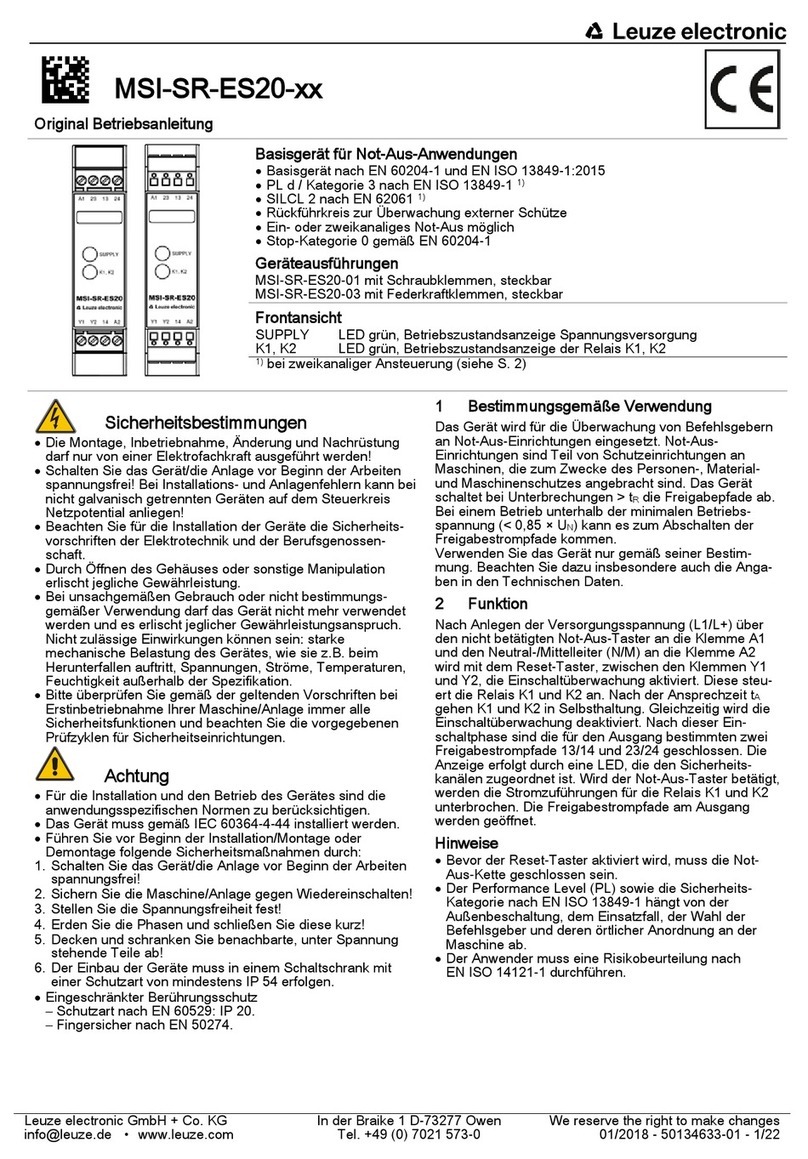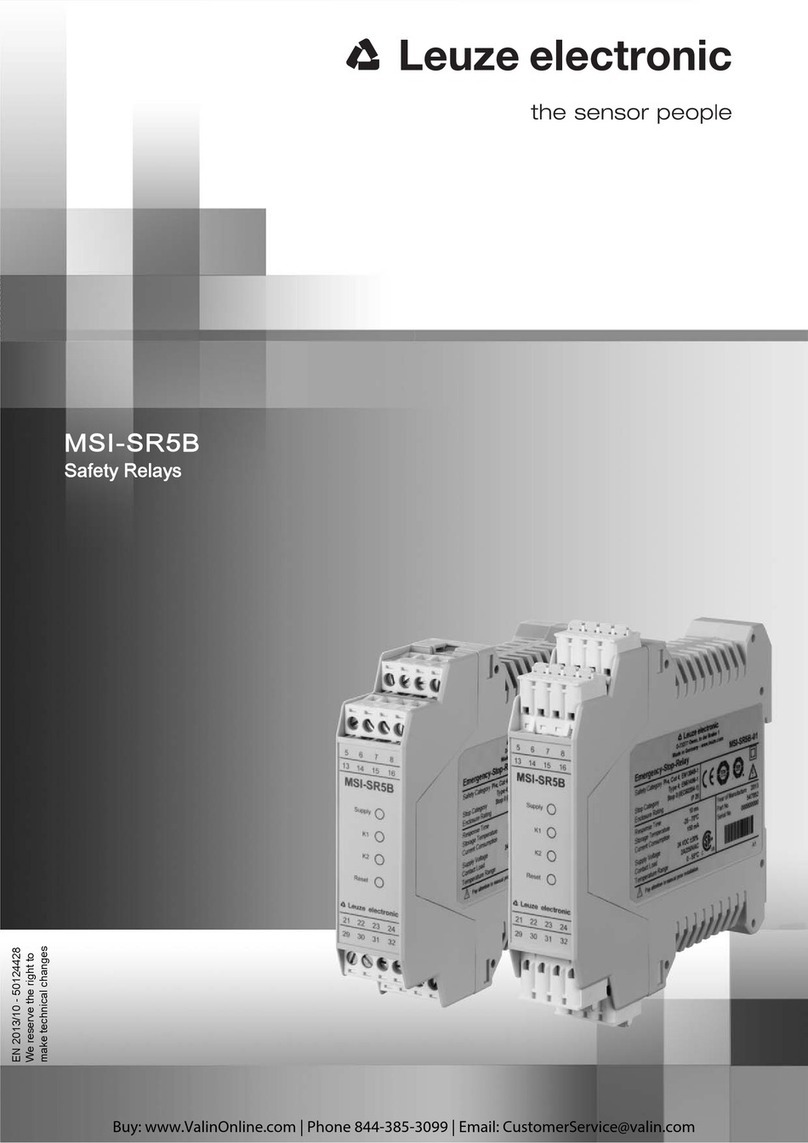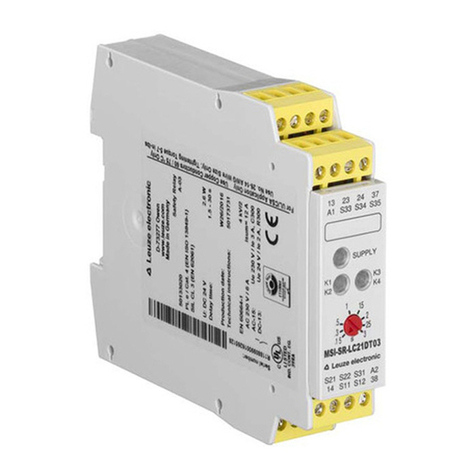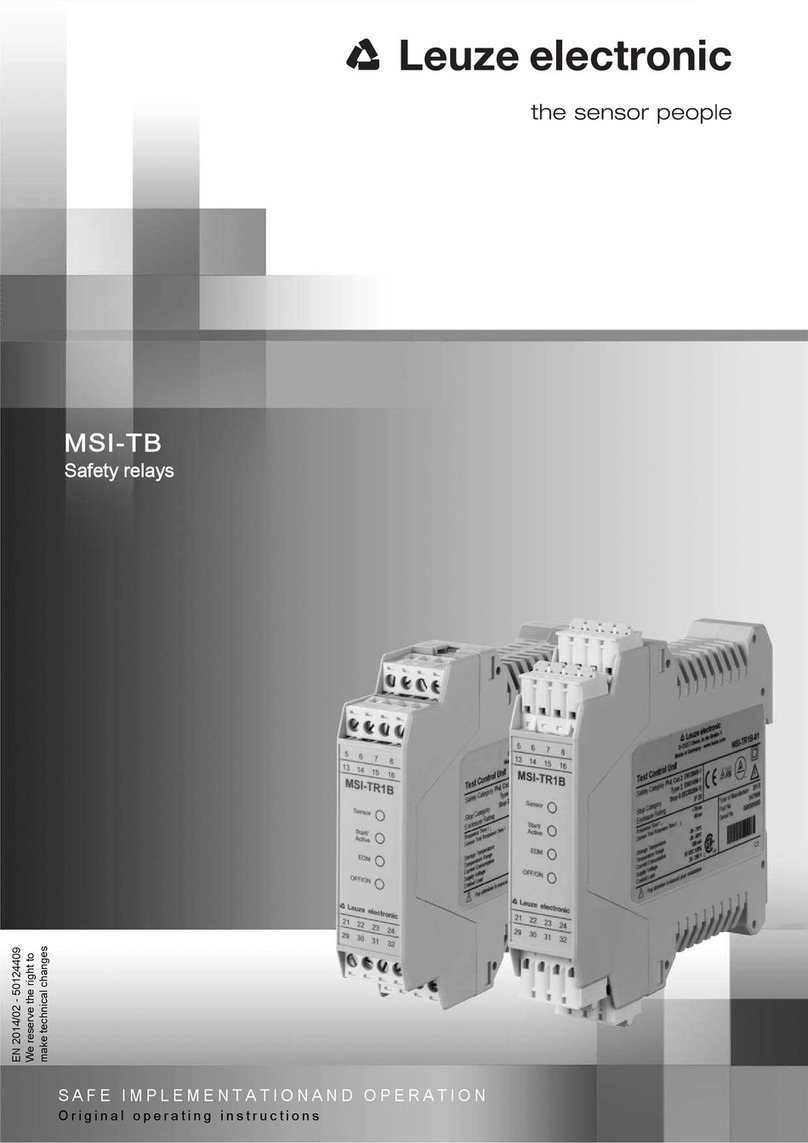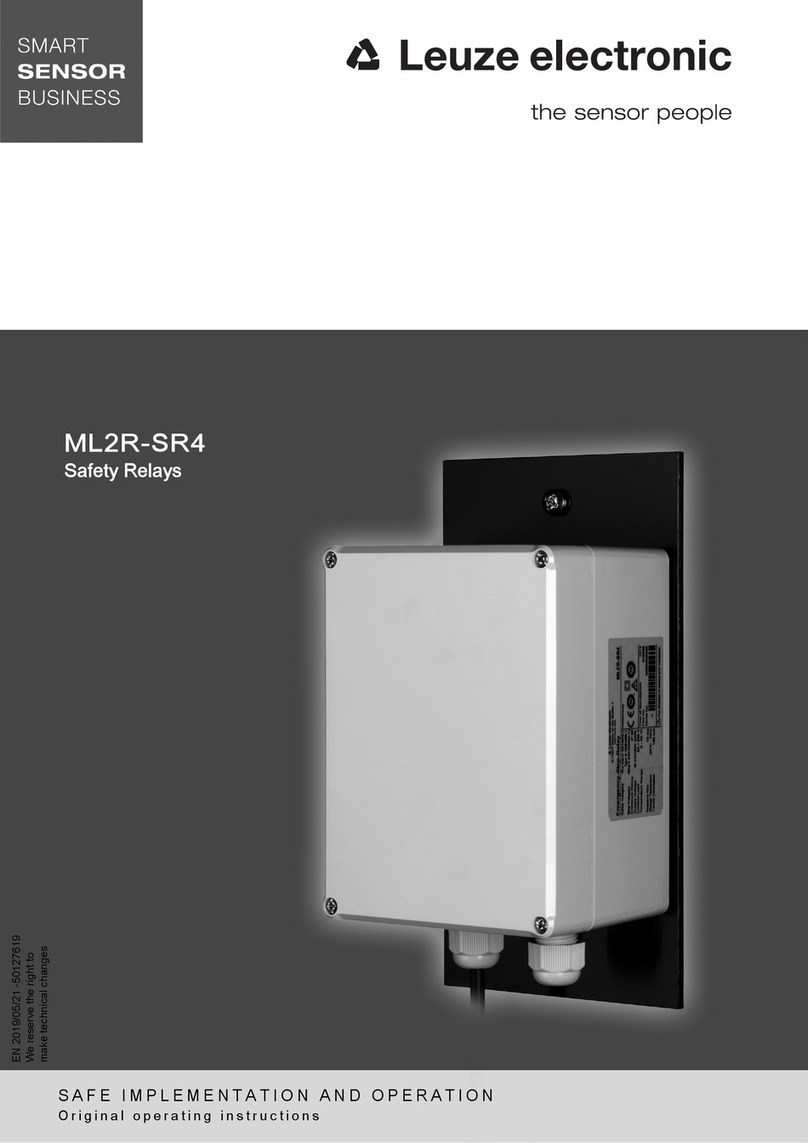
Leuze electronic MSI-SR5B 7
Only if the safety relay is correctly connected and correctly started up is the protective function of the
protective device ensured. To prevent misuse and resulting dangers, the following must be observed:
These operating instructions are included in the documentation of the system on which the protective
device is mounted and are available to the operating personnel at all times.
The safety relay is used as a safety monitoring device in combination with safety sensors, switches
and command devices for guarding danger zones or points of operation in machines and systems.
The safety relay must only be used after it has been selected in accordance with the respectively
applicable instructions and relevant standards, rules and regulations regarding labor protection and
safety at work, and after it has been installed, connected, checked and commissioned by a -
.
The safety relay must only be connected and commissioned in accordance with its specifications
(technical data, environmental conditions, etc.).
The Reset acknowledgment button for unlocking the start/restart interlock must be located outside
of the danger zone.
The entire danger zone must be visible from the installation site of the acknowledgment button.
The safety relay must be selected so that its safety-related capability meets or exceeds the required
Performance Level PL ascertained in the risk assessment (see table 13.1).
The machine or system control must be electrically influenceable so that a switch command sent by
the safety relay results in the immediate shutdown of the dangerous movement.
The construction of the safety relay must not be altered. When manipulating the safety relay, the pro-
tective function is no longer guaranteed. Manipulating the safety relay also voids all warranty claims
against the manufacturer of the safety relay.
The safety relay must be tested regularly by a competent person (see chapter 9 Testing).
The safety relay must be exchanged after a maximum of 20 years. Repairs or the exchange of parts
subject to wear and tear do not extend the service life.
It must be ensured that the E-Stop function always acts directly and immediately. An example for the
connection of a two-channel E-Stop button (see chapter 7.2.2 Acceptance of pending sensor signals (S1
and S2), for both channel 1 (Sx1) and channel 2 (Sx2)).
E-Stop buttons connected to the safety relay act only on the safety circuit to which the AOPD or the safety
switch is assigned. Thus, it can be considered to be an area E-Stop. The limited sphere of action of the
button is to be clearly marked for the operating personnel. E-Stop buttons must only be used for safety-
related STOP signaling.
The Reset reset button for unlocking the start/restart interlock (RES)
must be located outside of the danger zone.
must be mounted so that the entire danger zone can be viewed from the installation site.
must not be accessible from within the danger zone.
If the overview of the situation is not ensured in the case of two danger zones, two reset buttons (e.g.,
connection at the local socket of the AOPD) are to be used. The assignment of the buttons for the respec-
tive danger zone is to be clearly labeled for the operating personnel.
Any use other than that defined under the Approved purpose or which goes beyond that use is consid-
ered improper use.
Alone, the safety relay is not a complete protective device. It is not suitable for use in the following cases:
in explosive or easily flammable atmospheres.
on machines or systems with long stopping times.

